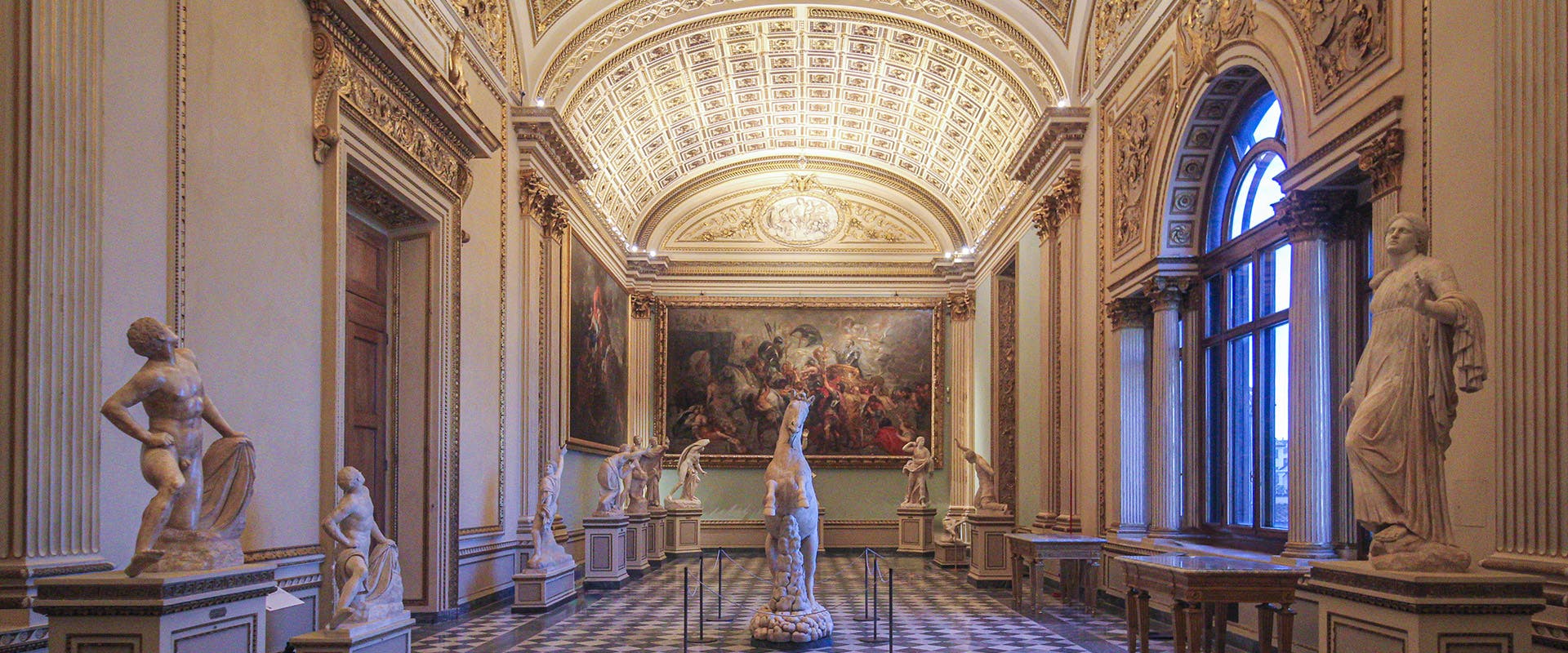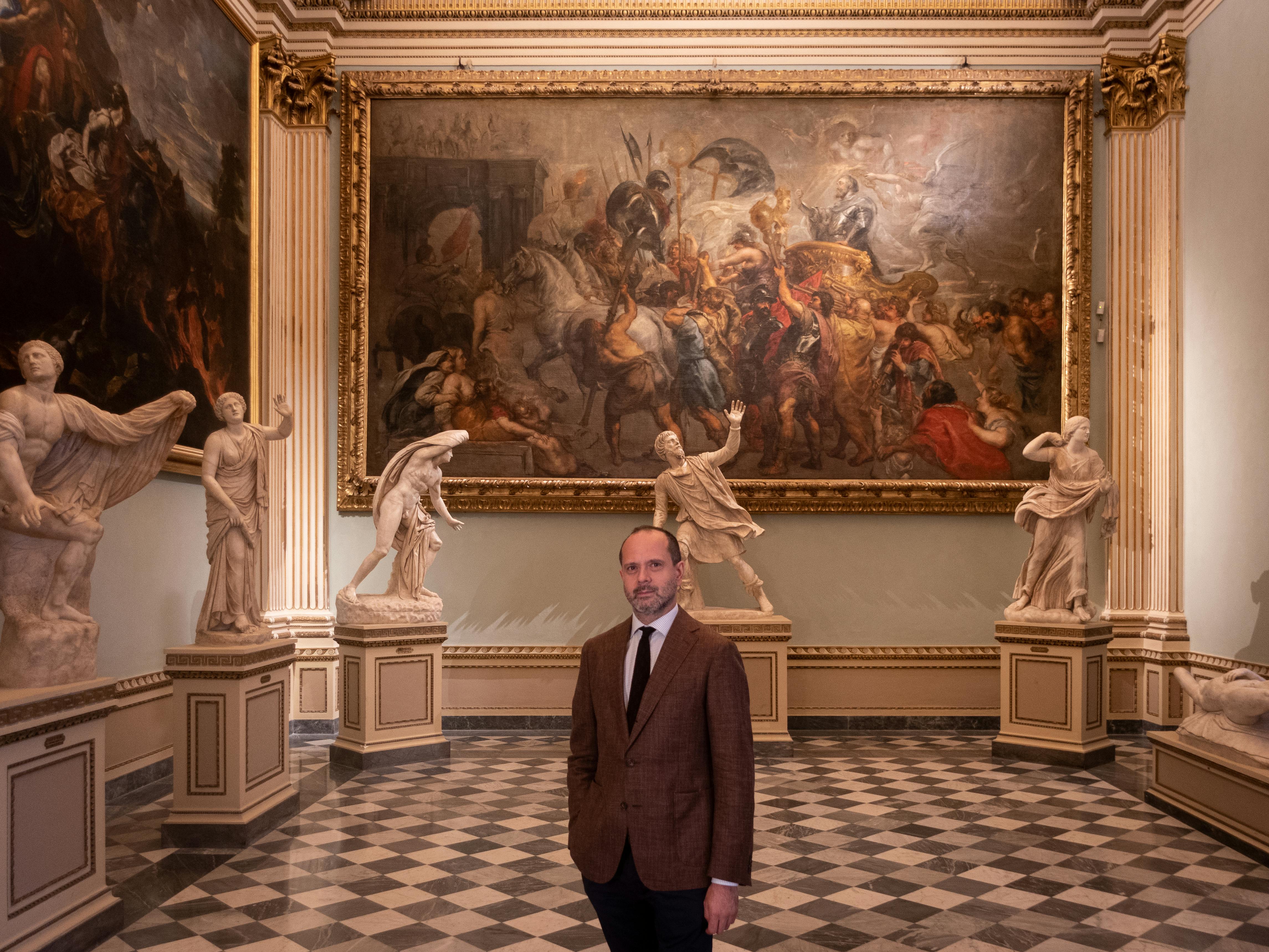The Niobe Hall in a new light
A new lighting system and the return of the monumental horse for a restyling provided with great scenographic impact
The Niobe Hall on the second floor of the Uffizi literally shines again with a new light, the "Stanzone" of the Medici era that, at the behest of Grand Duke Peter Leopold Habsburg-Lorraine, was transformed in 1780 into the current gem of neoclassical architecture with the specific purpose of hosting the sculptural group depicting Niobe and the Niobids, which is the "translation" in marble of Ovid's myth that tells the story of the revenge of Apollo and Artemis, who, to punish the arrogance of Niobe who had boasted of having more children than their mother, decide to exterminate all her offspring before her petrified eyes.
From today, 90 energy-efficient lamps with very high colour rendering allow visitors to appreciate the details of all the sculptures of Niobe and her unfortunate children, to which the new lights give further and spectacular dramatic effect, while it is finally possible to admire in full light also the stunning ceiling's stuccoworks and gold decorations by the Albertolli brothers, together with the monumental canvases by Rubens, Suttermans and Grisoni on the three internal walls. Finally, from today the visitors can also enjoy the view of Florence from the side facing outwards, along with the natural light that filters freely through the windows from which the blackout curtains have been removed to be replaced by special films against ultraviolet rays.
To end the new restyling of the stunning hall, the monumental horse of Roman age (1st - 2nd centuries AD) was placed in the centre of the room. It was found by chance in the sea, at the mouth of the Tiber, in the sixteenth century and at the behest of the future Grand Duke of Tuscany Ferdinando I de'Medici was already placed in dialogue with the group of the Niobids in his Roman residence of Villa Medici, where it remained for about two centuries. Today the horse returns to the room that saw it as the protagonist together with the other statues from the beginning of the twentieth century until 2006, when it was replaced to make room for the large sarcophagus of the so-called General, today relocated on the first floor of the gallery.
"With the new arrangement of the Niobe Hall - comments director Simone Verde - it is as if the Uffizi had today acquired new masterpieces of painting, which in the past were substantially invisible due to inadequate museum lighting. Furthermore, the return of the great Hellenistic horse into this space after almost twenty years is a new step forward in the project of the historical recomposition of the museum's collections. Thus one of the most important rooms of the Lorraine era is returned to its full legibility and made available to the public in all its recovered splendour".

